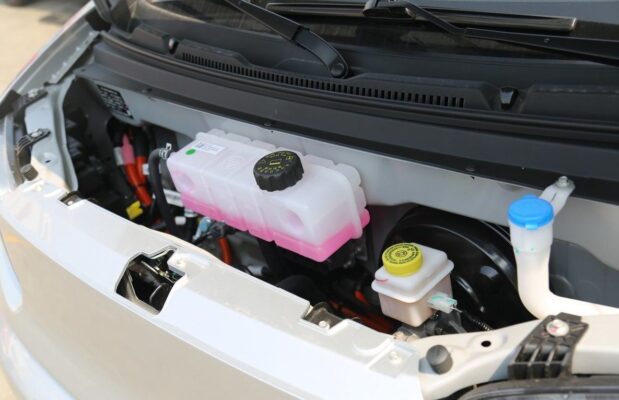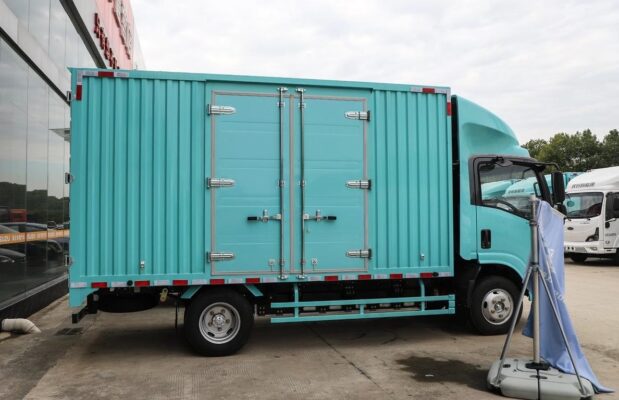Знання електричних вантажівок
Can Pure Electric Vehicles Utilize Wireless Charging Technology?
Опубліковано на за Електричні вантажівки
When we think of wireless charging technology, the first thing that comes to mind is often the wireless charging feature on our smartphones. In the realm of new energy vehicles, wireless charging technology is also envisioned as a future charging modality. Nevertheless, for a variety of reasons, it has not been widely adopted. Instead, it has gained popularity in consumer products such as mobile phones, mice, and toothbrushes. But why hasn’t this seemingly “high-tech” and highly convenient wireless charging technology found extensive application in the domain of new energy vehicles as of yet?

Principles and Characteristics of Wireless Charging Technology
The most common example close to our daily lives at present is the smartphone that supports wireless charging. The underlying principle is essentially the same as that of automotive wireless charging, primarily employing electromagnetic induction and magnetic field resonance to transfer electrical energy. Both of these methods have their respective pros and cons.

Taking the electromagnetic induction wireless charging system as an illustration, it comprises two coils. One is the transmitting coil, which generates an alternating current in the other receiving coil under Faraday’s Law of Electromagnetic Induction by creating an oscillating magnetic field, thereby achieving the goal of charging. Currently, many smartphones with wireless charging capabilities are of the electromagnetic induction type. The advantage of this induction charging is the high energy conversion rate. Однак, for a wireless charging system, the charging efficiency has a direct correlation with the distance and positional deviation between the transmitting coil and the receiving coil. Even the slightest positional deviation of the two coils can significantly impact the wireless charging efficiency, and only one-to-one charging can be accomplished.
This technology, therefore, presents numerous challenges when applied to vehicles. The wireless charging system of a vehicle typically consists of a “charging pad” fixed on the ground, representing the transmitting coil, while the receiving coil is installed at the bottom of the movable vehicle. When a driver requires wireless charging, only by reversing precisely into the designated position can wireless charging be initiated. Then, the question arises: How can we ensure that the vehicle parks precisely in the correct position every time?

Due to this, many automotive companies have integrated wireless charging technology with parking systems. For instance, Toyota has developed a set of parking assistance systems to guarantee the wireless charging efficiency of electromagnetic induction. Drivers can view the position of the charging pad through the central control display screen, thereby enhancing the parking efficiency. BMW has also introduced a set of parking assistance systems to enable wireless charging functions. Drivers reverse the vehicle in accordance with the parking assistance lines on the top view of the central control display screen. Once the vehicle reaches the exact position of the charging pad, the system automatically issues a parking instruction.
Given the high positional requirements of magnetic induction wireless charging, numerous enterprises have shifted their focus to another mainstream approach – magnetic field resonance technology. The principle of magnetic field resonance is to ensure that the transmitting coil and the receiving coil have the same resonant frequency and conduct energy conversion through frequency resonance. This method not only has lower positional requirements for the coils but also enables simultaneous charging of multiple devices.

With such technical advantages, magnetic field resonance technology provides the foundation for the design of dynamic wireless charging, that is, by laying a wireless charging system beneath the road to facilitate vehicle charging while in motion. Наприклад, as early as 2013, South Korea paved a 12-kilometer-long wireless charging lane, which was also the world’s first wireless charging bus lane. As a global leader in wireless operations, Qualcomm has also launched a magnetic field resonance wireless charging system. This Halo charging pad can complete the induction charging of the vehicle within a distance range of 50mm – 200мм. Under ideal conditions, the charging power range varies from 3.7kW to 22kW.
Compared to traditional charging methods, the wireless charging system undoubtedly offers significant convenience in charging, allowing for immediate charging upon stopping, and the wireless charging equipment has reduced space requirements. Додатково, relying on magnetic field resonance wireless charging, it is theoretically possible to achieve charging while driving, and it is even anticipated to address the range anxiety associated with pure електричний транспортний засібs. Однак, why hasn’t such a seemingly promising wireless charging technology flourished as expected?

Wireless Charging Fails to Address Charging Challenges
The most critical factor contributing to the limited development of wireless charging is its inability to address the charging pain points of users at the current stage. Currently, most models equipped with wireless charging technology available in the market are plug-in hybrid models from luxury brands. The primary reason is that the batteries of such models have relatively small capacities. After all, the charging power of today’s wireless charging methods, whether through electromagnetic induction or magnetic field resonance, is quite limited. Taking the 9.4kWh battery pack of the BMW 530Le as an example, its wireless charging power is approximately 3.2kW, and it takes at least 3 hours to achieve a full charge.
Generally speaking, the output power of mainstream wireless charging systems does not exceed 10kW, which is comparable to that of ordinary AC slow charging piles. When considering the losses during the energy conversion process, the actual output power is even lower than that of traditional wired slow charging.

Poor Anti-Interference and High Costs of Wireless Charging
In addition to having no advantage in charging power, wireless charging also suffers from poor anti-interference capabilities. Whether it is radio signals or other electromagnetic signal interferences, they can potentially cause the charging process to halt. Moreover, during the charging procedure, there must be no obstructions between the transmitting coil and the receiving coil; otherwise, the charging may also cease. Therefore, to circumvent the influence of these unfavorable factors, the optimal installation location for wireless charging equipment is in a relatively enclosed space, but this is not conducive to the large-scale promotion of wireless charging equipment.
The high cost of wireless charging equipment presents another significant hurdle. Installing wireless charging equipment not only requires ground excavation and concealed wire embedding but also encompasses the expensive wireless charging devices. It is reported that the cost of a single set of wireless charging equipment is 5-6 times that of an ordinary three-dimensional slow charging pile. If the transmitter buried underground encounters issues in the future, the subsequent maintenance is not only cumbersome but also incurs even higher costs. As for dynamic wireless charging, the expense of constructing a road covered with wireless charging equipment is unimaginably high.

Conclusion
На закінчення, at present, the application of wireless charging technology on certain high-end plug-in hybrid models is feasible. Even if the charging efficiency is low, it does not impact the normal driving requirements. Однак, for pure electric models with long ranges and large battery capacities, wireless charging has a negligible presence at this stage. After all, isn’t traditional wired fast charging more “appealing”? Of course, perhaps in the future, when wireless charging technology achieves breakthroughs in improving charging efficiency and speed and effectively resolves the charging pain points of users, it might then be truly widely adopted.
The development of wireless charging technology for електричний транспортний засібs is an ongoing journey. As research and development efforts intensify, we can expect improvements in areas such as charging speed, interference resistance, and cost reduction. This could potentially transform the charging landscape for електричний транспортний засібs, making wireless charging a more mainstream and preferred option.

In the future, we might witness wireless charging stations integrated seamlessly into urban infrastructure, allowing for effortless charging during brief stops or while vehicles are parked in designated areas. Додатково, advancements in materials and technology could lead to more efficient and reliable wireless charging systems that overcome the current limitations.
The path to widespread adoption of wireless charging in the електричний транспортний засіб sector is filled with challenges and opportunities. Continued innovation and investment in this area will be crucial in determining its success and contribution to a more sustainable and convenient transportation future.